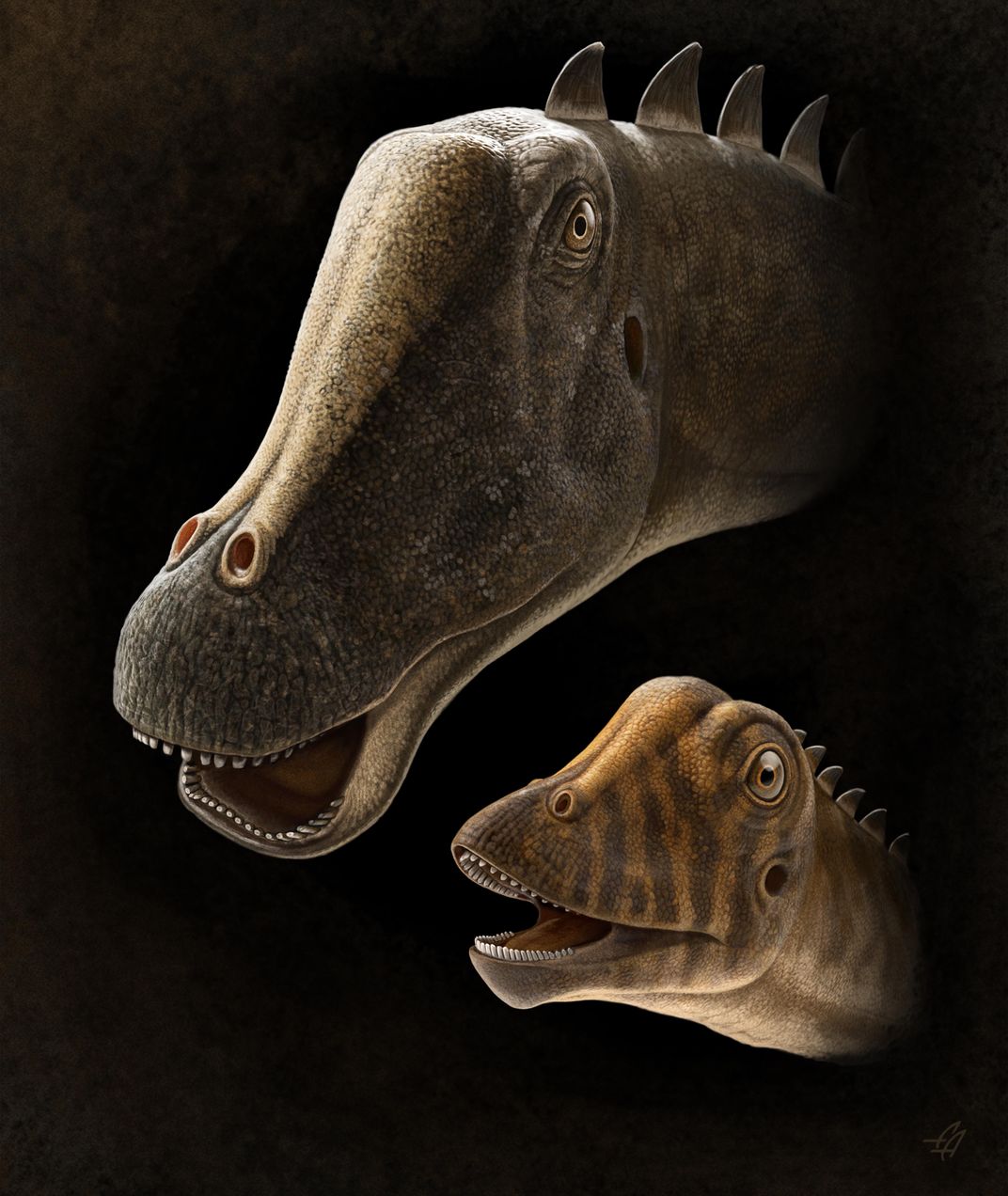Tiny Skull Illuminates the Lives of Giant Dinosaurs
The skull of a juvenile Diplodocus is one of the youngest of these dinosaurs ever found
:focal(1950x1077:1951x1078)/https://tf-cmsv2-smithsonianmag-media.s3.amazonaws.com/filer/ad/55/ad55c101-0a72-4afc-8858-a98608eeec15/press-release-image-3.jpg)
As far as dinosaurs go, Diplodocus was certainly one of the largest. Full grown adults could stretch more than 80 feet in length and weigh more than 13 tons. But, like all dinosaurs, these titans started off small. They hatched from eggs you could easily hold in your hand, starting their lives in a biological race to get big quick or perish at the teeth of ravenous carnivores. A rare skull from one of these young dinosaurs is helping paleontologists better understand the perilous life of Diplodocus as they started on their journey toward becoming giants.
University of Toronto paleontologist Cary Woodruff calls the fossil “Andrew.” The skull and first vertebra of the little giant were found among the roughly 150 million-year-old strata in a particular spot called the Mother's Day Quarry where multiple young Diplodocus were entombed. The skull is special for two reasons. “While over one hundred Diplodocus specimens are known,” Woodruff says, “fewer than a dozen skulls exist, and of those, only a few are from immature animals.” Andrew adds to that list, and, on top of that, is the smallest Diplodocus skull yet known. The fossil is described today in Scientific Reports.
In life, Woodruff and colleagues estimate, Andrew would have been about 20 to 30 feet long. Much of that length would have been neck and tail. “For Andrew,” Woodruff says, “imagine you took the body of a small cow and stuck a python on it.” That’s still awfully large for a young animal. The juvenile Diplodocus found at the Mother's Day Quarry were between two and six years old at the age of death, Woodruff says, meaning these dinosaurs grew fast once they hatched from their eggs.
Andrew wasn’t just a pint-sized version of an adult Diplodocus, though. In addition to being much cuter—the large eyes and short snout adding to that puppy-dog look—the muzzle and teeth of this dinosaur may indicate that it was living very differently than the grown-up sauropods.
/https://tf-cmsv2-smithsonianmag-media.s3.amazonaws.com/filer/3d/b5/3db5c1f6-c8cd-4f84-969a-c674ab7de65f/press-release-image-1.jpg)
Another young Diplodocus skull described in 2010 showed that the snouts of the youngsters were more narrow and rounded than those of adults, as well as having a longer row of teeth along the jaw. Andrew’s skull represents an even younger animal, and seems to take these trends further. Not only is Andrew’s snout narrower, but the teeth at the back of the jaw are different than expected. Up until now, it seemed that Diplodocus only had peg-like teeth, but Andrew’s rear teeth have a broader, “spatulate” shape associated with plucking coarse vegetation like conifers.
The reason these traits matter is that they could be related to the way these dinosaurs fed. “Snout shape has been shown to be a useful proxy for feeding behavior in living mammals, and this relationship has certainly been applied to an array of dinosaur species,” Macalester College paleontologist Kristi Curry Rogers says.
The basic idea is that grazers, which gobble down large amounts of low-quality plant food like grass, have broad, square muzzles, while browsers nip and pluck more nutritious, leafy foods with narrower or more rounded muzzles. The previously-discovered juvenile Diplodocus skull was used to support this argument for dinosaurs, and, Woodruff and colleagues propose, so does Andrew.
Not that the new reconstruction is without caveats, however. Some of the skull bones missing from Andrew could significantly change the shape of the skull reconstruction. “One problem here is that the material isn’t well-preserved enough to be sure of the interpretations,” Curry Rogers says. A better-preserved skull would help dispel some of the areas of uncertainty.
If the skull reconstruction of Andrew is on the mark, however, Woodruff and colleagues propose that the dietary difference could say something about the early lives of these dinosaurs. Over the past forty years, various examples of dinosaur parental care have been uncovered—parent dinosaurs sitting on nests, young that would have had to be fed, and other lines of evidence suggest that some dinosaurs looked after their offspring.
But the evidence is different among dinosaurs like Diplodocus. These dinosaurs, it seems, laid large clutches off eggs and generally left their offspring to fend for themselves, much like sea turtles today.
Andrew’s teeth support the idea that young Diplodocus were on their own from the beginning. “If an adult Diplodocus was bringing plants to their young, why would the young have this combination of tooth type?” Woodruff asks. “Would the adults be bringing them these different plant types, and if so, why, since they’re not going to be eating all those plant types for the rest of their lives?”
The team’s hypothesis is that Andrew and the other juvenile Diplodocus in the Mother's Day Quarry were making their way through the world without parental investment, but to really test this idea, more evidence is needed. “I don’t see a clear line of reasoning between differential feeding strategies or precocity,” Curry Rogers says, citing information from bone microstructure and postcranial anatomy to understand how diet and growth are connected for these dinosaurs.
These discussions are all part of a larger paleontological investigation of some of the largest animals to walk the Earth, and Andrew will no doubt play a continuing role. Aside from diet and behavior, in some ways Andrew’s skull more closely resembles those of more ancient sauropods than adult Diplodocus. “Andrew could help us to understand the evolutionary history of Diplodocus,” Woodruff says, further opening windows into the deep past.
This little dinosaur may have a large impact on how we understand the Jurassic world.

/https://tf-cmsv2-smithsonianmag-media.s3.amazonaws.com/accounts/headshot/RileyBlack.png)
/https://tf-cmsv2-smithsonianmag-media.s3.amazonaws.com/accounts/headshot/RileyBlack.png)